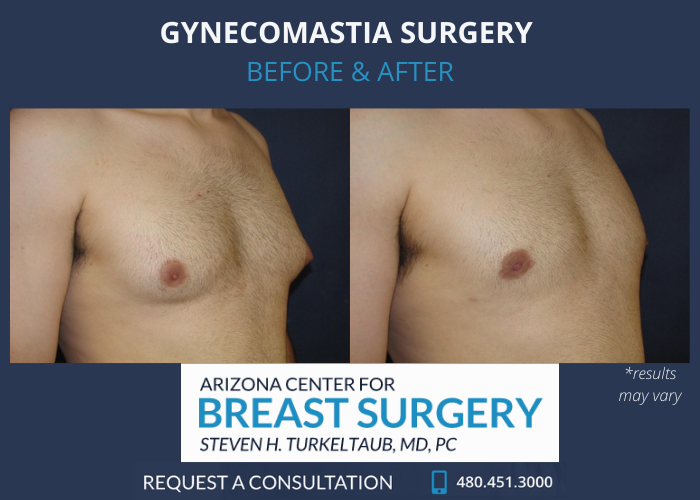Home|Blog | How Do You Know If You Have Gynecomastia?
How Do You Know If You Have Gynecomastia?
3 Minute Read:
Gynecomastia is a condition associated with enlarged male breasts. It is quite common, especially during puberty, and can often be detrimental to one’s self-esteem and confidence at most any age.

Male breast tissue enlargement (glandular tissue) usually occurs due to a hormonal imbalance. For instance, the male breast tissue can abnormally develop if the body is producing more estrogen than testosterone or if the effects of testosterone are being blocked for some reason. This can happen due to natural changes in hormone levels, certain medications, soy and other “natural” products, use of specific recreational drugs and alcohol.
Common symptoms of gynecomastia include enlarged breasts, breast tenderness, increased nipple sensitivity and pain.
Male breast enlargement can also occur due to fat related to obesity. This technically is called pseudogynecomastia but it is still gynecomastia in the general sense.
Who Can Get Gynecomastia?
Gynecomastia can affect men and boys at different times of their lives. For instance, many newborn males develop gynecomastia due to their mother’s high estrogen levels. This type of gynecomastia usually goes away on its own within a couple of weeks.
Boys often experience gynecomastia during puberty due to elevated estrogen levels. This condition resolves for most by the end of puberty.
Males above the age of 50 can also get gynecomastia due to a drop in testosterone.
In addition to the above factors, gynecomastia can develop due to:
- Anabolic steroid use
- Alcoholism
- Marijuana use
- Opioid use
- Kidney disease
- Liver disease
- Thyroid disease
- Antidepressants
- Medications such as for high blood pressure, enlarged prostate and substance abuse
How Can I Know That I Have True Gynecomastia
Having enlarged breasts is a sign that you may have gynecomastia. However, that does not differentiate whether your gynecomastia is related to glandular tissue or excess fatty tissue (pseudogynecomastia) which commonly occurs with obesity. Many times, both issues are present and contribute to breast enlargement.
To determine if you have true gynecomastia, you will need a plastic surgeon to obtain your relevant medical history and to examine your breasts. In certain circumstances, it may also be helpful to get an endocrinological evaluation, mammogram and/or ultrasound.
Can Gynecomastia Be Treated?
In some situations, gynecomastia will resolve on its own such as when it is associated with puberty or obesity. When it is due to a particular medication, stopping that medication may help the condition to decrease or go away on its own.
However, if you are suffering from true gynecomastia or pseudogynecomastia, male breast reduction surgery is often the best and only route for the treatment of this condition . The procedure provides for the removal of excess breast tissue and/or fat.
You can learn more about whether you may benefit from gynecomastia surgery, read our blog here.
This is commonly done with excision techniques (for the excess tissue) and liposuction (for the excess fat).
What Does Gynecomastia Surgery Look Like?
Visit our male breast reduction before and after gallery to learn more.
Interested in Learning More About Gynecomastia Surgery?
If your breasts are enlarged and their appearance is bothering you, then you may want to consider plastic surgery to help you surgically reduce the size of your breasts to a more normal appearance. You can contact us at the Arizona Center for Breast Surgery by calling (480) 451-3000 or by filling out our online contact form.

